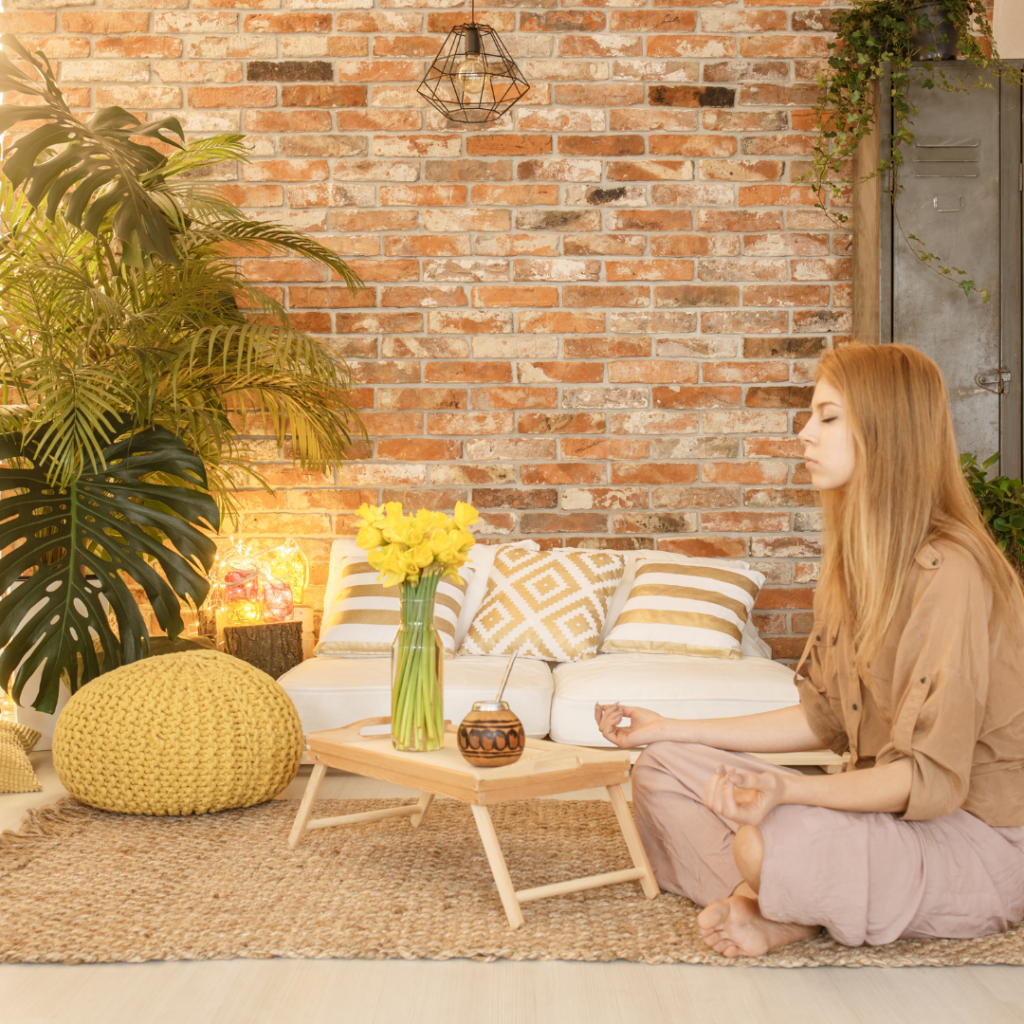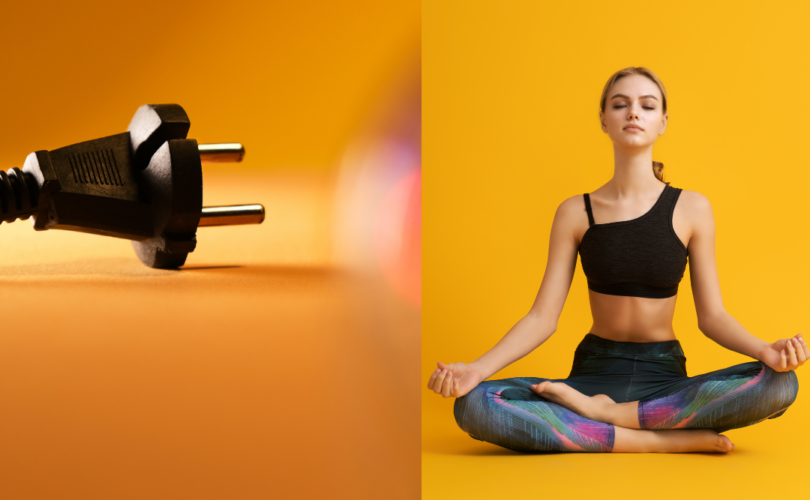This month I noticed the stream of world events, including this week’s news of Russia invading Ukraine.
This news, combined with the ongoing news of the Pandemic has invaded my peace of mind.
Just yesterday my son, Omni was sent home from school due to a cough. He got tested immediately. Fortunately, he does not have COVID, but this incident felt overwhelming.
I find myself feeling disturbed and troubled, as I realize that there is too much news media in my life.
Does this sound familiar to you?
Don’t get me wrong, I’d like to be aware of the world events, so I know how to focus my prayers. But I find that if I allow it to invade my peace of mind, my prayers become diluted and weakened as I feel a sense of growing insecurity in my heart and mind. However, the heavy news keeps coming.
So this past weekend I did what I advise others to do.
I UNPLUGGED.
I needed to clear my mind.
One way that I am able to gain much-needed clarity, is by stepping into my “SACRED SPACE”.
This space can be different for different people. This can be where you can go for a walk in nature, such as a beach, or it can be a space in your home where you can be still.
How a Sacred Space Can Serve You Daily
Being raised in a traditional Hindu family, it was customary to dedicate one spot in the home as the ‘sacred space’. In this space, spiritual routines would be performed by my parents, including daily short meditation.
So, naturally, I have spent much of my adult life designing a spot in my home as my sacred space.
Such a space that allows me to get out of my head, or my thinking mind.
This space prepares me to truly listen to my conscience.
My sacred space happens to be in a small room where I can disconnect from the chaos of the outside world.
I think of this space as a sacred container where I can retreat at any time, to connect to my higher self or divine within.
Once I arrive in my sacred space, I first relax my body through a movement modality such as qi-gong or yoga so that I am able to listen to myself from a place of calmness.
But first, you must relax your body, so that through calmness you may listen to yourself.
Next, I usually practice a mindfulness modality that includes intention setting, followed by pranayama (breath-work), meditation, and at times some journaling.
Neuroplasticity research reveals the powerful effects of meditation in re-wiring the brain to create more positive thinking patterns. Additionally, meditation increases the brain’s gamma waves, which can help build self-awareness, and cultivate focus, and a general sense of happiness.
There are 3 key elements in building self-awareness: space, silence, and stillness.
Jack Kornfield, leading Buddist Meditation Teacher & Author, emphasizes the therapeutic value of creating a space that feels safe. In the context of a therapy session, it is where one can feel they are being held.
This feeling of “being held” is exactly how I feel in my personal sacred space.
T.I.M.E
Silence and stillness are qualities that we can tap into through the mindfulness modalities integrated into our daily routine.
My personal sacred space is where I practice my daily mindfulness routine. This routine enables me to feel relish silence, tune into stillness, calm my mind, listen to myself, energize my body, and heal my heart.
Author of “Think Like a Monk: Train Your Mind for Peace and Purpose Every Day” Jay Shetty provides the following four essentials for a daily mindfulness routine:
- T = Thankfulness: Express gratitude for a person, place, or something every day. This includes thinking about it, writing it, and sharing it.
- I = Insight: Gain insight through daily self-introspection, and through reading content that lifts your state of consciousness or awareness. This could include reading an article, a book, or listening to a podcast.
- M = Meditation: Consider a daily routine that includes meditation techniques that enable you to feel the immense healing power of silence and stillness. This could include mindfulness modalities such as breathwork, affirmations, and listening to healing sounds.
- E = Exercise: Movement of the physical body allowing energy to flow. Cultivate the practice of starting off your meditation practice by first relaxing the body through energy movement exercises such as Yoga, Qi Gong (I highly recommend SATORI Method), or any type of workout that allows you to release tension.
Each time you practice your daily routine, your sacred space becomes more conducive to helping you become present, as the energy in that sacred space increases.
Designing Your Sacred Space
While you could think of a walk along the beach as your sacred space, you can also create such a space in your home.

This space doesn’t need to be large or occupy an entire room. In fact, the edge of your bed can essentially be your sacred space, where you can go inward and get centered.
The most essential quality of your sacred space is how this space makes you feel energetically.
Location has energy; Time has memory. If you do somethign at the same time every day, it becomes easier and natural. If you do something in the same space every day, it becomes easier and natural.
Jay Shetty
To enhance your sense of being energetically held safely or grounded, consider integrating elements or items as part of this space that soothes your sense, or holds sacred value.
Soothe Your Senses
Consider a holistic approach to what you include in this space, so that you may connect to it through your sight, sound, scent, and even tactical feelings. For example for tactile touch consider a healing crystal, for sight consider flowers, for scent, consider your favorite incense, for sound consider a singing bowl, and consider introducing a ritualistic object such as a candle to invoke your practice.

Overall your sacred space should invoke a feeling more present, a sense of calmness, a feeling of being more grounded or centered, a place that invokes a mindset of gratitude, a place to practice mindful movements such as Qi-Gong or Yoga, and a place to bring your overall body-mind-spirit in alignment.
Elements of your Sacred Space
Objects or items hold a specific energetic vibration. Each time you return to your spot you should reconnect to your body, mind, and spirit.

Reflect on what elements will help you feel held, calm, and comforted. Include elements that hold uplifting or healing qualities that resonate with you personally.
- A meditation sitting pillow for restorative comfort, placed in a peaceful area of your home.
- A sacred altar with an image or photo that symbolizes a divine connection.
- A candle to help you create a point of focus, and inner alignment.
- A set of incense sticks to help soothe your senses.
- A source of sound to promote relaxation or healing, such as a singing bowl, chimes, or bells.
- A source of ambient light such as a Himalayan Salt Lamp or Healing Lamp creates a calming atmosphere.
- A few natural elements to connect to the earth, and to remain grounded, such as a few precious gems, crystals, or stones.
- A journal to introspect or reflect.
- A set of items that invoke a sense of gratitude, that connect to your various senses – such as prayer beads, objects that hold sacred energy or fond memory, flowers, a scented candle, or your favorite gem or stone.
Create a Spiritual Ritual
The magic in making your sacred space effective is in being consistent in cultivating your practice in this space. Each time you arrive in this space allow yourself to unplug, and realize that through your intentions, your rituals, and practice you are learning, expanding, and healing.
Click the link to my blog Elements of a Morning Spiritual Ritual to learn more about creating a ritual. And to find physical elements to consciously enhance your sacred space click on the link below.

Disclosure: Omnimindfulness is viewer & reader-supported. I only recommend books, products, or services that I would use myself and all opinions expressed here are my own. I may earn a small commission when you click on the affiliate links, at no additional cost to you.









